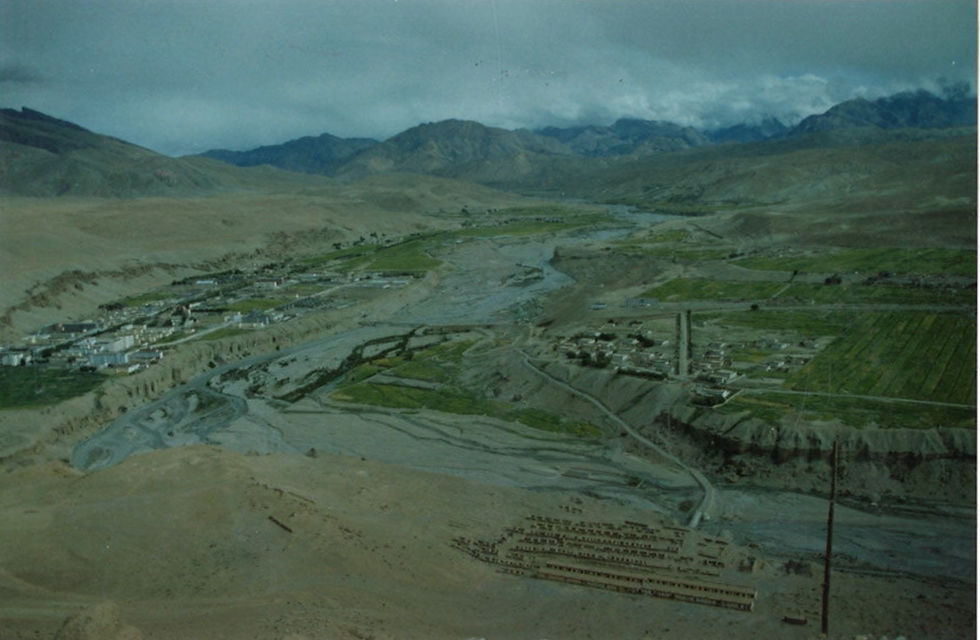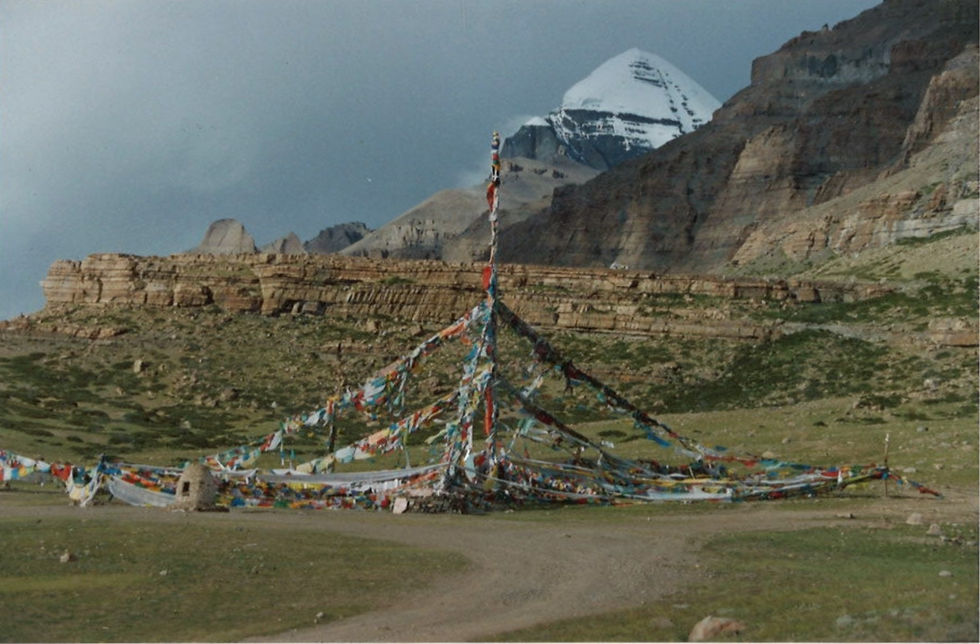Trans Himalayan Trade
- panchachuliweavers
- Aug 10
- 3 min read
In 1995, the Lipu Lekh Pass reopened after a gap of thirty five years and the historic Trans Himalayan Trade was revived by the semi nomadic tribals of the Byans, Darma and Johar valleys, whose ancestors had been trading for centuries with Tibetans. Borax, wool, salt and gold dust from Tibet were brought across the high Himalayan passes in exchange of jaggery, cotton cloth, spices and tea from India.

At the time, I had just begun working with tribal women artisans from Munsyari, the pashmina shawls and homespun tweed fabrics made in the villages of Darkote and Dummar had sold well at exhibitions in Delhi. I seized the opportunity to apply for a Trade Permit and cross the Himalayas with my friend Manjari, a trekking enthusiast, and we set off from Dharchula with a local trader in the pouring monsoon rain, nudging our pack ponies laden with tea, jaggery, and bales of cotton cloth along the treacherous and slippery path, following the roaring Kali river upstream to its source near the Lipu Lekh pass, camping en route for a week.


Dawn at the 17,000 ft high Lipu Pass revealed the vast Tibetan plateau with its strange rock formations striated with pastel hues, and the towering hulk of the Gurla Mandhata range. We arrived at the Talkakot trade fair grounds after an exhausting walk across the desolate highland with the sun beating down mercilessly. The trade grounds were occupied by rugged men from Nepal, Tibet, India and Xingkiang and as the only women traders we attracted a lot of attention. Manjari and I would wake up to find our tent surrounded by fierce Khampas with scarlet braids in their long black hair peering at us in an inquisitive but friendly way.


We bought quantities of Bactrian camel wool from traders who had come all the way from Xingkiang and headed to the Ngari plains between Mt Kailash and Manasarovar to meet the Drokpa nomads and buy precious cashmere combed from their flocks of goats.


Having completed our business transactions, we set off to circumambulate the holy mountain Kang Rimpoche ( Jewel of the Snow, as Mt Kailash is known in Tibetan ). Gazing at Kailash for the first time from the shoulder of Mandhata, with the lakes Manasarovar and Rakshas Tal gleaming azure and emerald below us, we were transported to another dimension where the power and majesty of the surreal panorama awed and humbled us. Three days of circumambulating Mt Kailash felt like a mystical death and rebirth. We crossed the Western valley of Amitabh Buddha with towering rust cliffs surrounding Kailash, shining like a diamond, and reached the forbidding heights of the Dolma pass after walking below the fearsome North Face of the mountain, where brooding rock formations resembling the eye sockets of a skull seem to gaze into one’s very soul. Tibetans leave articles of clothing and personal belongings near the Dolma pass signifying their death. The valley of Tara after descending the Dolma pass represents rebirth with its grassy meadows, the cave where the great Tibetan mystic Milarepa lived, and the bubbling stream known as the Tsang Po which becomes the mighty Brahmaputra.

Returning to the ramshackle town of Dharchula after a month, Manjari and I, unbathed, unkempt and covered in mud from scrambling over landslides, loaded our precious cargo into a truck waiting to take us to Almora and finally home to Binsar, where my father, the quintessential philosopher, remarked “ my dears, Kailash is now within you”. Thus began a journey which eventually resulted in the formation of Panchachuli Women Weavers, in which hundreds of village women with no background in weaving were painstakingly trained by the expert weavers of Munsyari and of the Leprosy Rehabilitation Centre in Almora which I had set up in 1989 with the help of a universally beloved and respected IAS officer, Keshav Desiraju, who was the DM of Almora at the time. My next story will be about how the leprosy cured destitutes living in caves on the outskirts of Almora became talented weavers, providing woollen fabric to the Parisian designer Christian Lacroix.

Comments